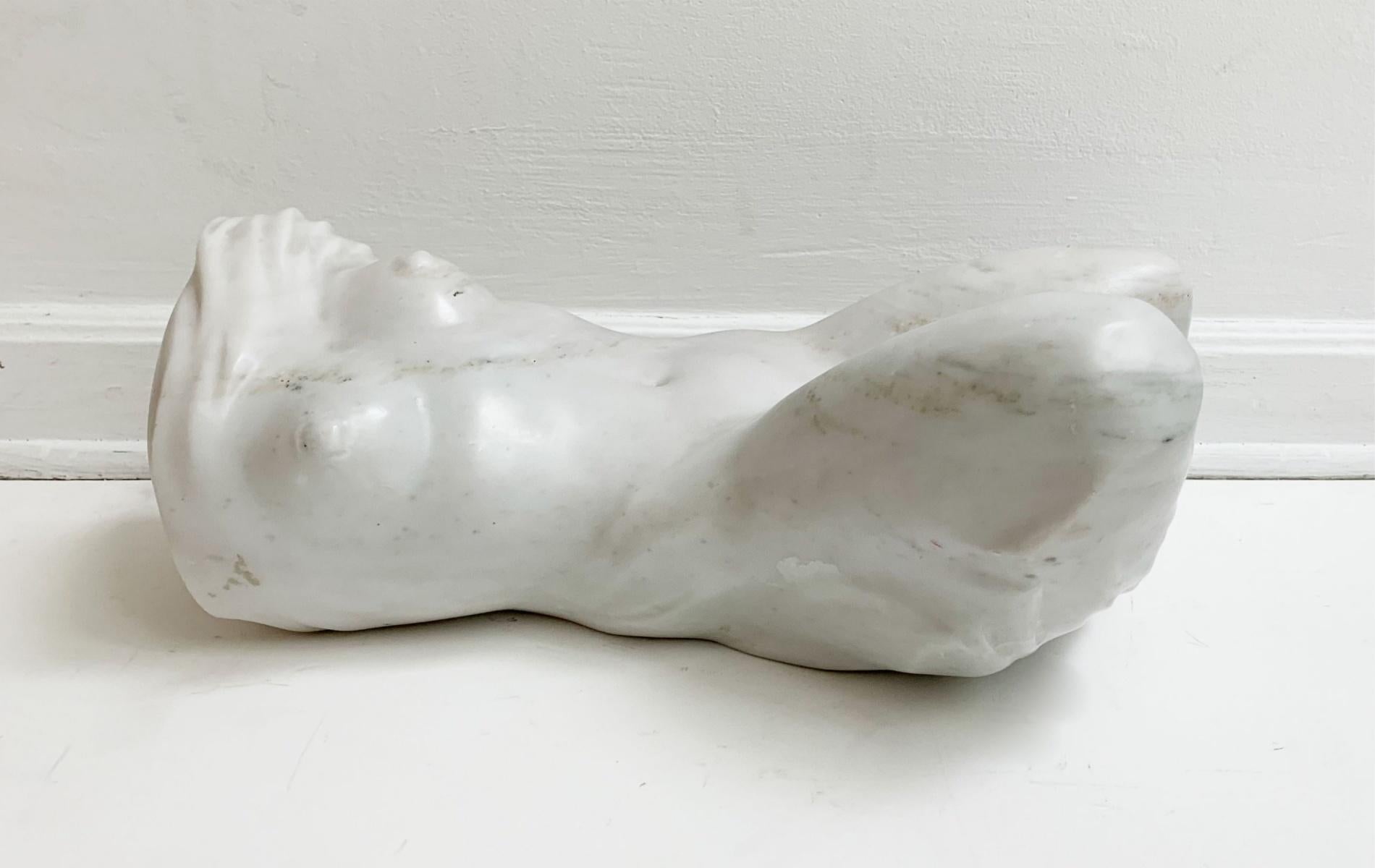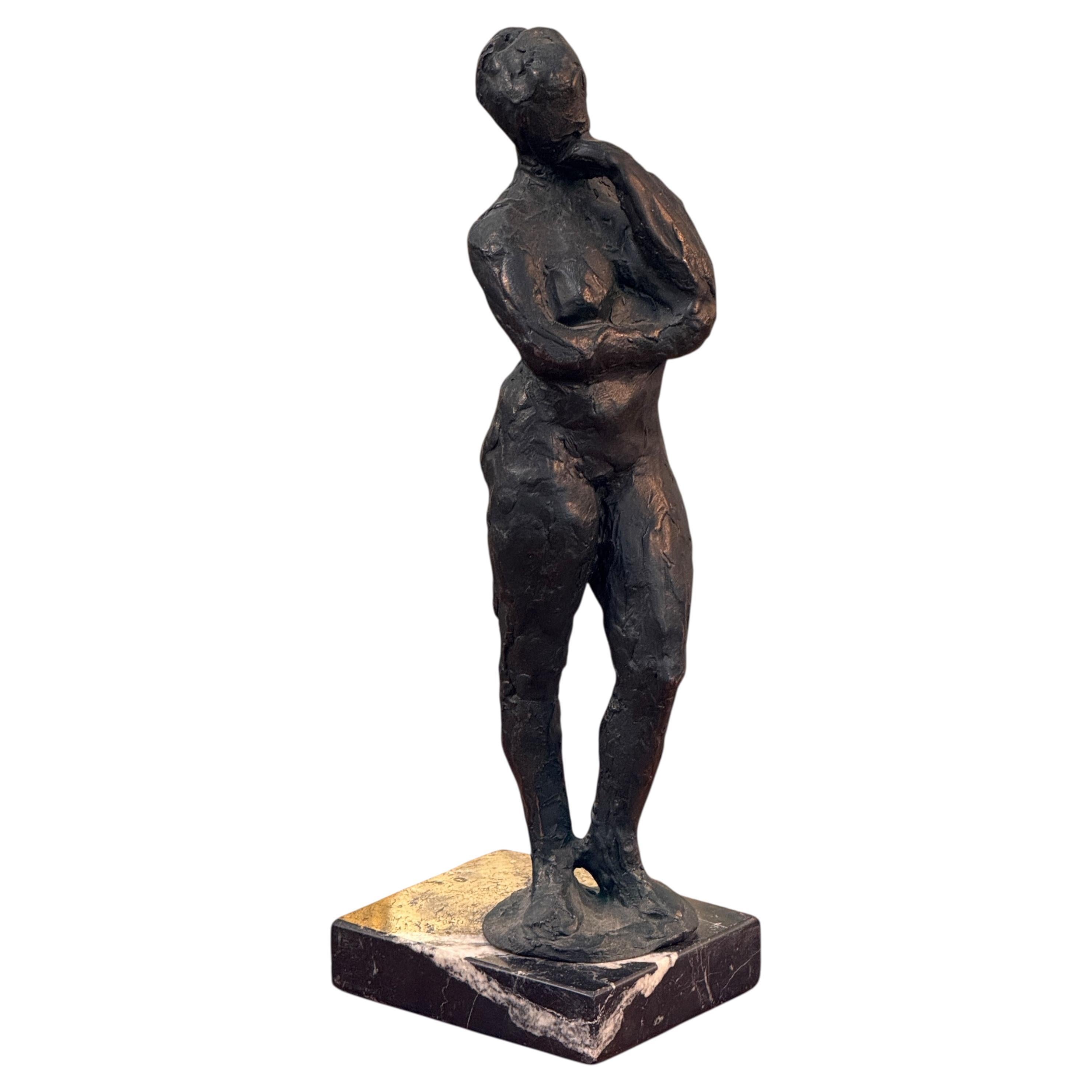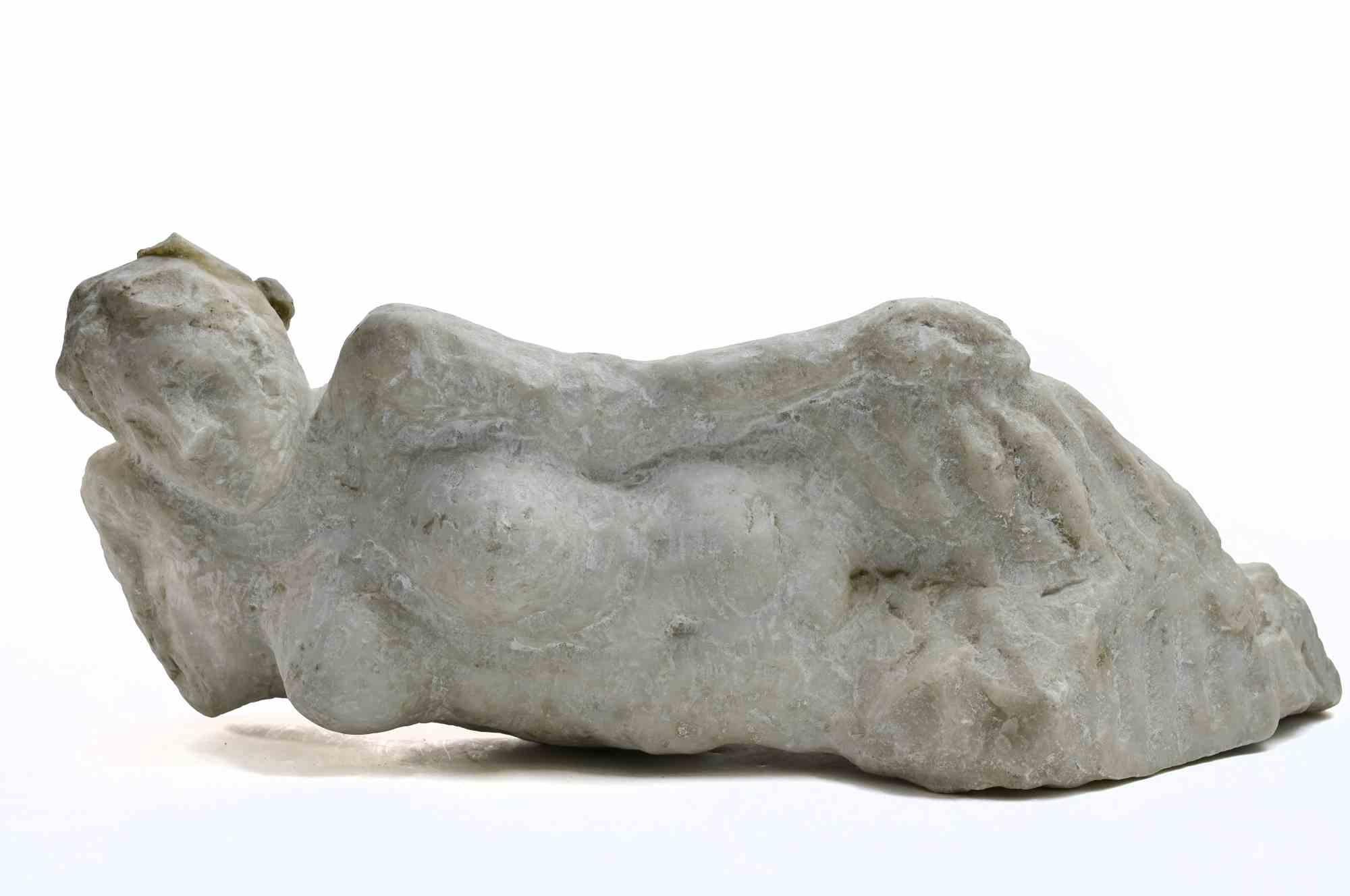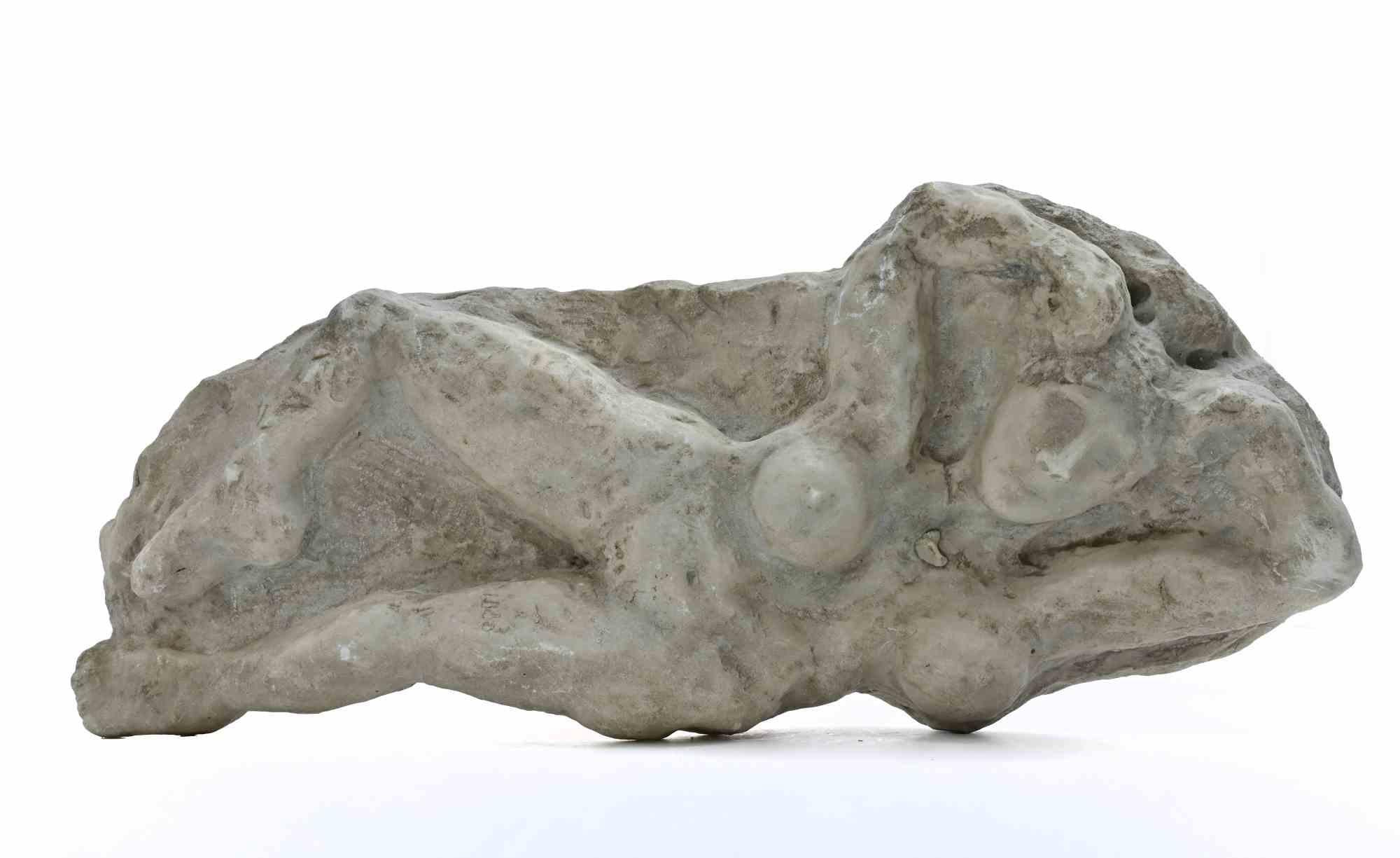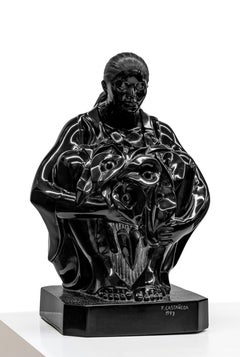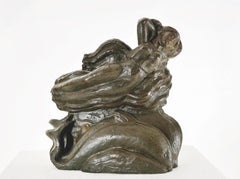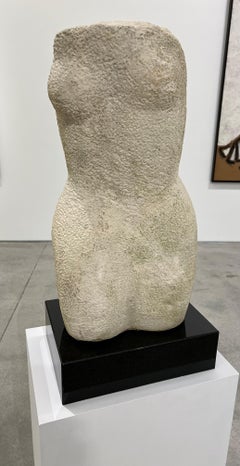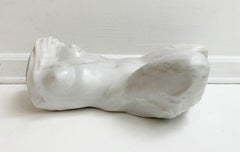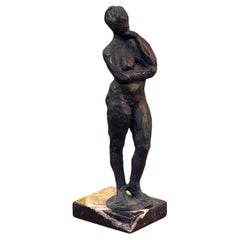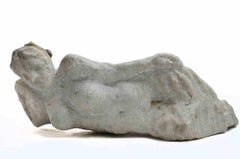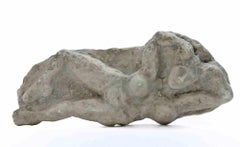Items Similar to Felipe Castañeda, Desnudo, 1984, Marble, 52 x 32 x 35 cm, 20.4 x 12.5 x 13.7 in
Want more images or videos?
Request additional images or videos from the seller
1 of 3
Felipe Castañeda Felipe Castañeda, Desnudo, 1984, Marble, 52 x 32 x 35 cm, 20.4 x 12.5 x 13.7 in1984
1984
Price Upon Request
Price Upon Request
Price Upon Request
Price Upon Request
Price Upon Request
Price Upon Request
Price Upon Request
Price Upon Request
Price Upon Request
Price Upon Request
About the Item
Felipe Castañeda
Desnudo, 1984
Marble
52 x 32 x 35 cm
20.4 x 12.5 x 13.7 in.
Felipe Castañeda (Mexican, b.1933) began his artistic career working at the National Museum of Anthropology in Mexico City. During that time, he became an assistant to the renowned sculptor Francisco Zúñiga (French, 1867–1947), who quickly helped the artist realize his aptitude for sculpting and carving. Castañeda finished his studies in 1963, and by 1970, he was showing his work in exhibitions.
Castañeda experiments with many media in order to master molding clay for his sculptures, preferring to work in marble, onyx, and bronze. The heavy influence of pre-Columbian artifacts is evident in his traditional approach to representing the human form.
The subject of women is the center of his creativity: wife, mother, lover, and friend. He depicts her kneeling, standing, sitting, reclining, and stretching - capturing all her moods.
About the Seller
5.0
Vetted Professional Seller
Every seller passes strict standards for authenticity and reliability
Established in 1989
1stDibs seller since 2021
Typical response time: 1 to 2 days
- ShippingRetrieving quote...Shipping from: Miami, FL
- Return Policy
Authenticity Guarantee
In the unlikely event there’s an issue with an item’s authenticity, contact us within 1 year for a full refund. DetailsMoney-Back Guarantee
If your item is not as described, is damaged in transit, or does not arrive, contact us within 7 days for a full refund. Details24-Hour Cancellation
You have a 24-hour grace period in which to reconsider your purchase, with no questions asked.Vetted Professional Sellers
Our world-class sellers must adhere to strict standards for service and quality, maintaining the integrity of our listings.Price-Match Guarantee
If you find that a seller listed the same item for a lower price elsewhere, we’ll match it.Trusted Global Delivery
Our best-in-class carrier network provides specialized shipping options worldwide, including custom delivery.More From This Seller
View AllFelipe Castañeda, Mujer con Flores, 1982, Black Marble, 20.4 x 12.5 x 13.7 in.
By Felipe Castañeda
Located in Miami, FL
Felipe Castañeda
Mujer con Flores, 1982
Black Marble
52 x 32 x 35 cm
20.4 x 12.5 x 13.7 in.
Felipe Castañeda (Mexican, b.1933) began his artistic ca...
Category
1890s Post-War Figurative Sculptures
Materials
Marble
Maqueta las toninas
Located in Miami, FL
Maqueta las Toninas, 1944
BMY-022, 1970
Edition 1/25
Bronze
22 x 22 x 10 cm
8.6 x 8.6 x 3.9 in
ABOUT THE ARTIST
Narvaez was born in Porlamar, Venezuela, in 1905; he was the fifth son of eleven siblings; his parents were Jose Lorenzo Narvaez and Vicenta Rivera. Don José Lorenzo, a multifaceted and creative man, sowed the seed of creativity in his son. “My father did not fit in with his fantasies of cabinetmaker, bricklayer, master builder, and self-taught architect.”1 From an early age, Francis was led to the artistic activity, he traced, carved, made replicas of the furniture and the saints restored by his father.
In 1920 he obtained his first professional assignment, a San Rafael for the Church of Carupano, and, in 1922, his father authorized him to travel to Caracas to pursue his studies as an artist. He studied at the atelier of Marcos Castillo, at of the Angel Cabre y Magriña and at the Academy of Fine Arts in Caracas, where he was introduced to the painters and intellectuals of the time.
In 1928 he presented his first solo exhibition at the Club Venezuela. With the money raised from the sale of the works and the support of Monsignor Sosa, and the Ministers Centeno Grau and Arcaya, he studied in Paris on a scholarship. Once there, he enrolled at the Académie Julian, where Tito Salas, Cristóbal Rojas and Arturo Michelena had also studied. It was in Paris where, unable to work in wood, he turned to stone carving. “In Paris, I didn’t have wood, so I carved a lot in stone (…), when there were demolitions I purchased chunks of stone, I would take them to the workshop and carve them.”2
His first attempts at volumetric sculptures and painting in plain colours, linked to the thematic of American miscegenation and Creole reality, can be traced back to that first trip to Paris. During his stay in the French city, Arturo Uslar Pietri, Alfredo Boulton, and Finita Vallenilla supported the artist both financially and logistically, and in February of 1930, the trio of friends arranged another exhibition for him at the Club Venezuela. Narvaez describes his exhibition as follows: “(…) in it I feel that the sculptural work is more my own, done with more assurance, a response to my pursuit of large planes, stylisation and synthesis.”3 By then, as Boulton himself noted in his book about the artist, Narvaez departed from most of the artistic traditions that prevailed by that time in Venezuela.
In 1931 he returned to Caracas and established his atelier at the Barrio Obrero in Catia. The atelier became the hub of the intellectual life of the time. “In those years, the atelier of Francisco Narvaez was the hub of the greatest Venezuelan hope. Nothing comparable to it can be found either before or since.”4
From that year onwards, exhibitions, projects, trips, and awards we multiplied. He was awarded the President of the Republic of Venezuela Prize, the National Sculpture Prize of the 1st Official Venezuelan Art Salon, and the John Boulton Prize of the 3rd Annual Venezuelan Art Salon; for the Military Academy, he produced a spectacular relief entitled La Patria.
In 1945, commissioned by the architect Carlos Raúl Villanueva, he produced two groups of sculptures known as Las Toninas, both located in the O’Leary Square. There, as he himself states, he incorporates some baroque patterns into the figures to the source itself: “It is a work of balance between the decorative requirements and the sculpture of planes and angles.”5
In 1948 he was awarded the National Painting Prize. In the same year, he was called upon by the architect Carlos Raul Villanueva to participate in the project for the arts integration in the Universidad Central de Venezuela. Francisco Narvaez’s public output continued with works such as the statue of Fermín Toro, La Educacion, La Ciencia, three murals (produced by María Luisa Tovar) for the Instituto de Medicina Experimental, El Cristo; el Atleta, the equestrian statue of General Rafael Urdaneta.
In 1953 he was appointed Director of the School of Plastic and Applied Arts, and in July of the same year, he exhibited “Francisco Narvaez, Maderas, Piedras y Bronces” (Francisco Narvaez, Woods, Stones and Bronzes) at the Museum of Fine Arts.
Narvaez is, unquestionably, one of the great Venezuelan sculptors, his work goes through various stages and interests; as the art world evolves, the artist does not remain in his initial scopes of work. His creations are not imposed by the prevailing trends or fashion but do evolve by experimenting with new materials and interests.
When one peruses the artist’s lengthy list of exhibitions, commissions, and awards, it is worth remembering the Narvaez who embark on his career as a child and who, overcoming obstacles, knew how to make the most of his curiosity. He did not settle for living off his successes. He did not remain stagnant as many creators of his environment did. Narvaez managed to understand the changes in the history of art around him. We must not overlook the fact that Francisco Narvaez is an artist amid all the changes occurring in the art world. He moves from the classics to the great transformations in the art world. It is the Europe of Picasso, Braque, Arp. He observes, he is aware of what is happening in the centres of the world of art, but between his craft and his sensitivity, the result is NARVAEZ, his stamp, and his identity.
Francisco Narvaez comes from tradition, and his first stage is linked to the classics, to the exploration of his heritage, but always with his very own language. Throughout his prolific career, he knew how to remain true to himself, without disregarding the influences of his surroundings or his artistic interests: his ability as a sculptor, his selection of materials, whether they were wood, stone or bronze; his choice of the subject of his work…His mastery and great craftsmanship are a constant that over time have made him a leading player in the history of contemporary Venezuelan and world art.
From his beginnings, no subject was foreign to him. His paintings, drawings, aquarelles, and sketches are testimony to his prolific output. Among his themes are portraits, our traditions, still lifes, and landscapes. Narvaez is an artist who represents his time. Later, he evolved towards purer and simpler forms, abandoning figurative art for short periods.
In 1956 he declared to the newspaper El Nacional: “Every day I am freeing myself, it is a soul that frees itself from the ephemeral wrappings of the circumstantial always, as well as from the inevitable weight of the anecdote. This second stage of my work is remarkably close to abstractionism, even if there are still certain figures or figurations in the sculptures that I will shortly be showing. However, pure, and absolute abstractionism, it will treat the form itself as the sole reason for its existence on the plane of artistic excellence.”6
The artistic development was his professional life. Each period of his life as an artist, he went one step further, searching, solving, seeing plenty of things and understanding how diverse expressions were transforming themselves. His hands followed his gaze and his mind, always inquisitive. He added movement to the volumes.
Arturo Uslar Pietri, “Formas Nuevas”, Cromotip editions, 1956 “Francisco Narvaez is a path: the path that Venezuelan sculpture...
Category
1940s Baroque Figurative Sculptures
Materials
Bronze
Francisco Narváez, Forma, 1956, Bronze, Edition of 25, 30 x 8 x 10 cm
Located in Miami, FL
Francisco Narváez
Forma (BFM-049), 1956
Bronze (1970)
Edition of 25
30 x 8 x 10 cm
11.8 x 3.1 x 3.9 in.
LITTERATURE
Registro General de la obra de...
Category
1950s Abstract Abstract Sculptures
Materials
Bronze
Torso (FGPC-001)
Located in Miami, FL
Esta es una obra de arte hecha 100% a mano en piedra “Cumarebo” este es un tipo de material muy poroso y delicado de trabajar, lo que hace que su elaboracion y logro sea una faena pr...
Category
1950s Contemporary Nude Sculptures
Materials
Stone
Price Upon Request
Jorge Seguí, Esperansilla, Bronze, Edition 1/7, 2003
By Jorge Seguí
Located in Miami, FL
Jorge Seguí
Esperansilla, 2003
Bronze, Edition 1/7 + 3AP
71.1 x 40.6 x 30.4 cm 28 x 16 x 12 in.
Signed and Numbered.
Jorge Seguí b. 1945, Argentina. He a...
Category
Early 2000s Contemporary Figurative Sculptures
Materials
Bronze
Price Upon Request
Jorge Seguí, Ilusion silla, 2000, Bronze, Edition of 7, 78 x 90 x 33 cm
By Jorge Seguí
Located in Miami, FL
Jorge Seguí
Ilusion silla, 2000
Bronze, Edition of 7
78 x 90 x 33 cm 30.7 x 35.4 x 12.9 in.
Signed and Numbered.
Jorge Seguí b. 1945, Argentina. He atte...
Category
Early 2000s Contemporary Figurative Sculptures
Materials
Bronze
You May Also Like
Nude - XXI century, Contemporary figurative marble sculpture, Classical, Realism
By Ryszard Piotrowski
Located in Warsaw, PL
RYSZARD PIOTROWSKI (born in 1952) Sculptor. He graduated from the Academy of Fine Arts in Warsaw. His works include intimate, small forms in marble, bronze and silver. He specializes...
Category
21st Century and Contemporary Contemporary Figurative Sculptures
Materials
Marble
1950s Standing Female Nude Sculpture on Marble Base
Located in Charlottesville, VA
Expressive cast sculpture of a standing female nude in a contemplative pose. The surface is roughly modeled with an organic, textured finish, capturing movement and form in a moderni...
Category
Vintage 1950s Figurative Sculptures
Materials
Marble
Nude of Woman - Sculpture by Sirio Pellegrini - 1960s
Located in Roma, IT
Marble sculpture realized by Sirio Pellegrini in 1960s.
Good condition.
Sirio Pellegrini, born in Rome on March 1, 1922, of Abruzzo origins (Capestrano), spent his childhood years ...
Category
1960s Modern Figurative Sculptures
Materials
Terracotta
Nude of Woman - Sculpture by Sirio Pellegrini - 1960s
Located in Roma, IT
Marble sculpture realized by Sirio Pellegrini in 1960s.
Very Good condition.
Sirio Pellegrini, born in Rome on March 1, 1922, of Abruzzo origins (Capestrano), spent his childhood y...
Category
1960s Modern Figurative Sculptures
Materials
Terracotta
Girl Torso, Modern Marble Sculpture by Antonovici
By Constantin Antonovici
Located in Long Island City, NY
An original carved marble sculpture by Constantin Antonovici from his Torso Series. Referenced in "Constantin Antonovici: Sculptor of Owls", pg 79
Antonovici was born in Neamt, Romania on February 18, 1911, and graduated from the Fine Arts Academy in Iasi, Romania, in 1939. In 1940, Antonovici studied in Zagreb with the famous Croatian sculptor Ivan Mestrovici, until his arrest by Italian fascists. Antonovici himself survived imprisonment in Germany for his refusal to fight on the side of the Nazis. After the war, he continued his studies in Vienna, under the tutelage of Professor Fritz Behn...
Category
1950s Modern Figurative Sculptures
Materials
Marble
Profundus Bronze Sculpture Nude Boy Contemporary Male Figure Marble Stone
By Wim van der Kant
Located in Utrecht, NL
Profundus Bronze Sculpture Nude Boy Contemporary Male Figure Marble Stone
Wim van der Kant (1949, Kampen) is a selftaught artist. Next to his busy p...
Category
21st Century and Contemporary Contemporary Nude Sculptures
Materials
Marble, Bronze
More Ways To Browse
Marble Sculpture Nude
Mexican Marble Sculptures
French Onyx Sculpture
Pre Columbian Mexican Art
Marble Nude Vintage Sculpture
Kneeling Nude
Reclining Marble Sculpture
Pre Columbian Artifact
Reclining Bronze Nude
Rodin Iris
Marie Paule Deville
Vintage Navy Recruiting Poster
Vintage Pinup Girls Art
Vintage Riviera Watch
W Burnett
William Finch
19th Century Oil Painting Monks
Andy Warhol Brooklyn Bridge
